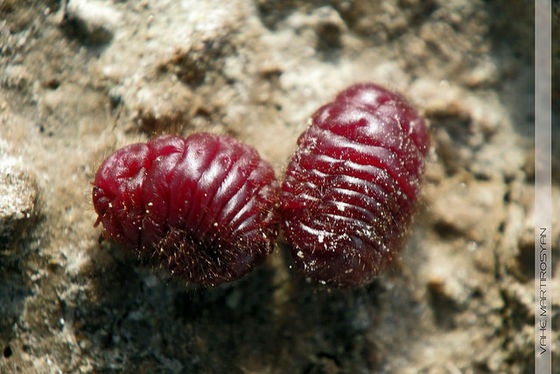"Red" which grabbed the hearts of the European people during the Renaissance period was made by grinding small insects

BySlave2TehTink
In Europe and many other parts of the world including Japan, "red", especially fromscarlet(Scarlet color) "and" Akane color "have been treated as colors symbolizing wealth and status. But vivid red was difficult to color and it was a very valuable thing in times when we only used natural materials. Meanwhile, the thing that shocked the world,Cochineal insectsIt was a dye made by grinding.
BBC - Culture - The insect that painted Europe red
http://www.bbc.com/culture/story/20180202-the-insect-that-painted-europe-red
For now it is scientifically explained how to reproduce vivid colors, but at that time in Europe "How to reproduce vivid colors" is like "magic", a limited craftsman group It was protected as "secret" of the outdoor enthrallment carried in among. A kind of snail used to make a noble color "Emperor purple"Tsurotubriva"It was considered valuable enough to be exchanged for gold of the same weight.
But "red" was the mainstream that was brought from the Ottoman Empire for many years. European craftworkers tried various methods to reproduce Ottoman red dyes made from the roots of madder stew, but it took months to cook olive oil of the smell of cows and nose, blood of young bulls It is said that it was not possible to reproduce the redness of Ottoman who performs processing using such as. European craftsmen also have otherBrazil, A liquid secreted by rack silkworm, a kind of fungiLichensI tried to make bright red with using, but it seems that I could only produce orangey colors and dyes that fade immediately. Although it was able to dye vivid red with the dye made by crushing the insect named Kermes crayfish, production was not so much as it was difficult to collect Kermeth, and it seems that it was limited to woolen luxury goods.
In such a period Europeans came to the capital of the Aztec empire ·Tenochtitlanwas.Hernán CortésIn this new world conquered by them, unlike in Europe, dyes that gathered cochineal silk scallions were used. In Spain, cochineal has been exported in large quantities to Europe as "Kermes from New World".

ByVahe Martirosyan
Quetzalina Sanchez, an expert familiar with fabrics in Mexico, says that meso Americans who lived in the southern part of Mexico began to make dyes using cochineal scales in about 2000 BC about. People who lived in the area of the current Puebla and Tuscala Province, Oaxaca have a system for breeding by breeding and improving cochineal insects and using the dyes obtained therefrom to copy manuscripts and murals etc. It is considered to have been colored.

Byputneymark
At the time Cortez and others reached the Aztec empire, the surrounding villages belonging to the Aztec empire contained dyes made from Cochinil Scales and taxes dyed with it as taxes. Cortes soon recognized the wealth that exists in the land of Mexico, but the actual situation seemed to be of "level beyond understanding" at the time, the King of SpainCarl VIn the letter addressed to "I think that we can not understand this reality despite what we have seen with this eye." Regarding the market that was held in the capital city of Tenochtitlan, I wrote that it is "twice as much as Samaranka" as an example of a Spanish city, "Because there are sold yarn dyed in various colors (Spain It looks like Granada's silk market in the south, but this one is bigger.In addition, although there are as many painters as you can see in Spain, this is as good as Spain I am using vivid colors. "

ByMadelinetosh
Nonetheless, the original Cortés seemed to be more interested in gold and silver than red dyes, which also seems to be the case with Carl V. However, Carl V who saw the cloth received from Cortez later ordered Cortez to export red dyes made from cochineal insects to Spain. Spain, which thus gained valuable red dye, succeeded in gaining enormous wealth, but only a few rewards were paid to Aztec people who produced dyes locally, Sanchez He says.
Red made from cochineal scalp was 10 times stronger than dye widely used at the time, "St John's Blood", and said that it was 30 times better than another "Armenian red". Due to the high production efficiency compared with the dye made from Kermeus scald, the dye made from cochineal insects sweeps across Europe. In the 1570s red dyes are the highest profit-raising item in Europe, and in 1557 trading volume which was 50,000 pounds (about 22 tons) reached 150,000 pounds (about 66 tons) in 1574 It has been recorded that there has been an increase in the number of people.
We also know that the red dyes of Cochineal Scalp have been used by great painters such as Gauguin, Renoir and Van Gogh. Later, the red of the cochineal scalp, which has been used in a number of paintings until the scientifically synthesized dyes are born in the 19th century, is now transferring the stage of active from the paint to the dye for food,Cochineal pigmentIt is still being kept making even now.
Related Posts:







